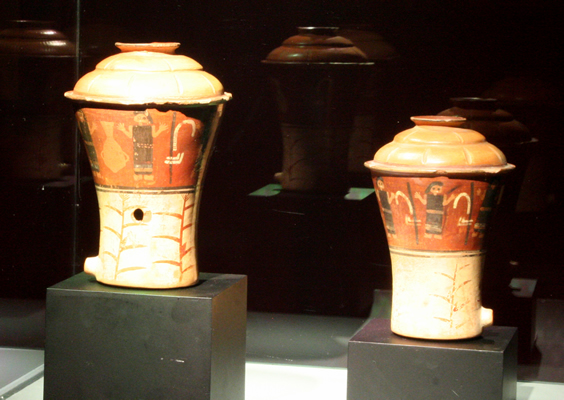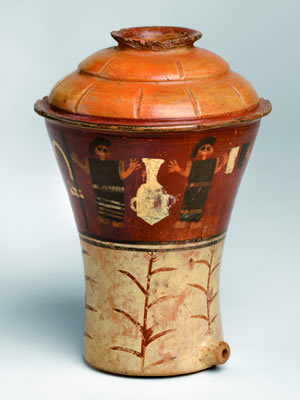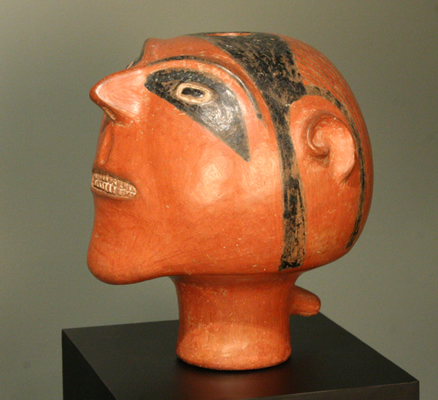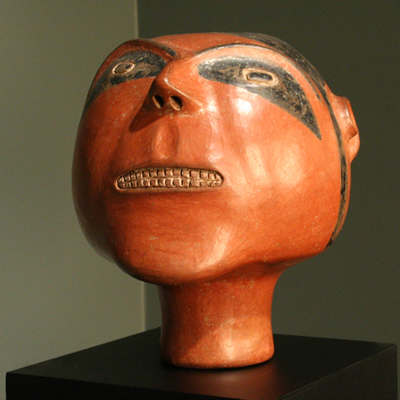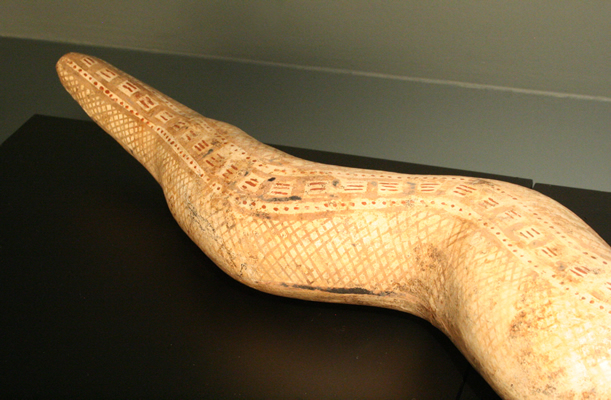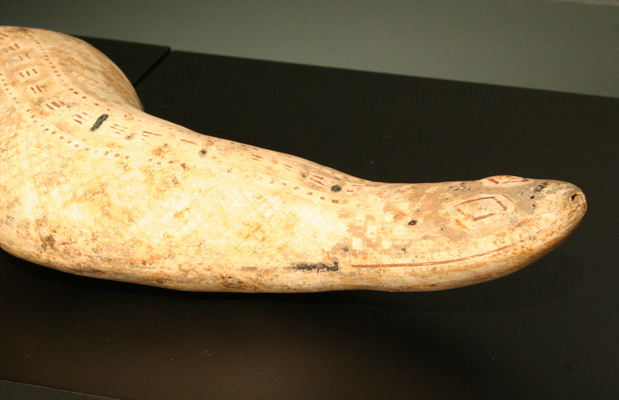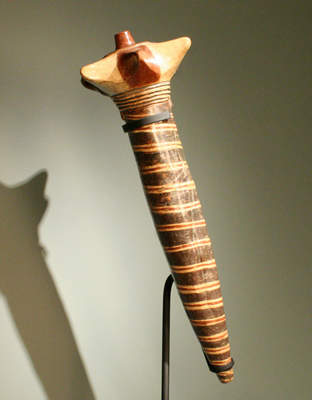Chile under the Inka Empire – 2009
Paccha
The Inkas gave pacchas to their Diaguita allies to reward their loyalty
Excavations at a number of graves in a cemetery in the city of Ovalle have brought to light rich and varied Diaguita-Inka funeral offerings. Perhaps the most interesting of the objects left as grave goods are two remarkable ceramic vessels known as pacchas, the only ones found in Chile to date. It is known that the Inkas used these vessels exclusively in ceremonial worship of water and fertility. In general, pacchas are shaped like animals or other symbols related with agricultural fertility in the Andean mythology. The snake may represent “Mother Earth,” while the human head symbolizes the seed that germinates in the soil after it is made fertile by the water or maize beer poured onto it from one of these vessels. Ritual items such as these were probably gifts given by Inka leaders to the Diaguita authorities to cement the fruitful alliance that ensured Inka dominion in the southern reaches of the Collasuyu.




































